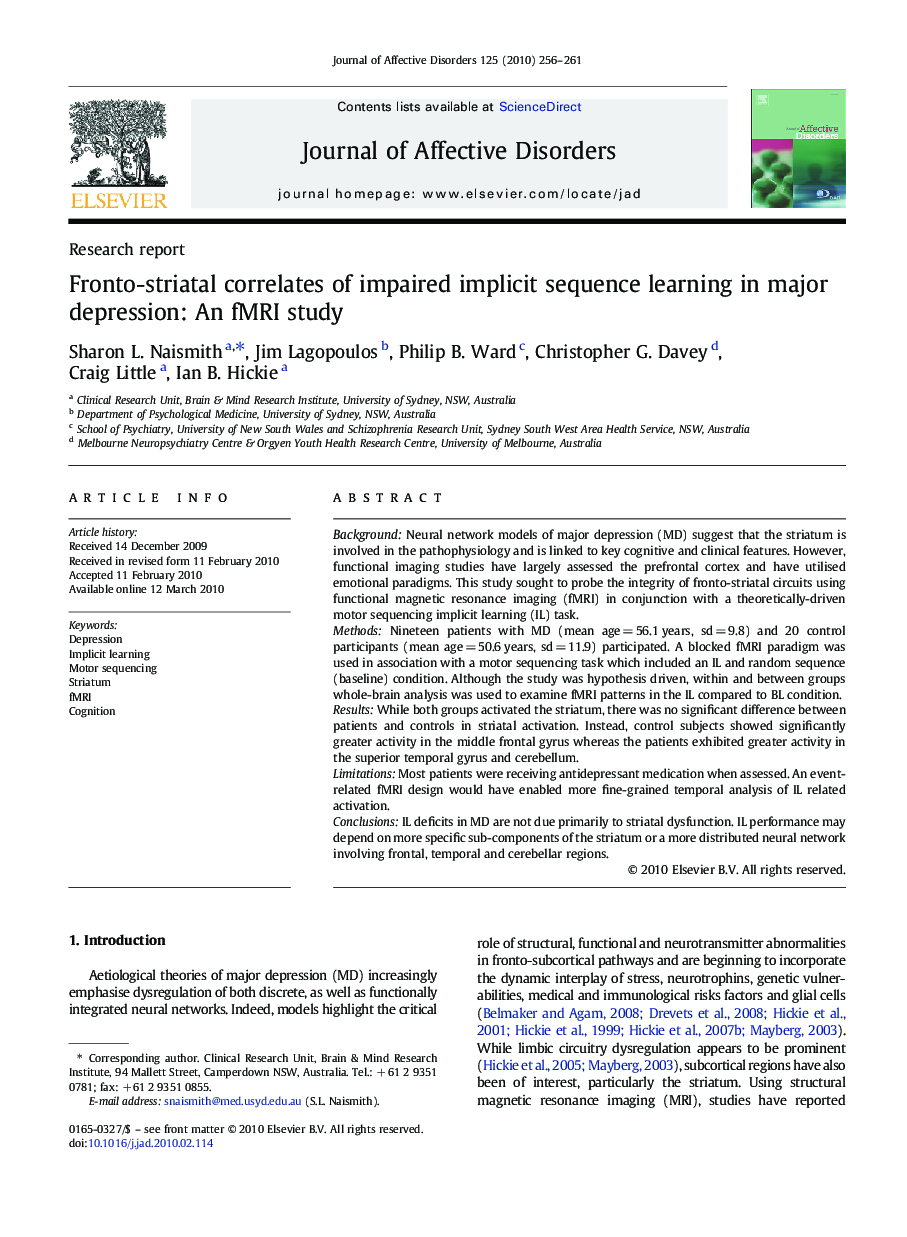| Article ID | Journal | Published Year | Pages | File Type |
|---|---|---|---|---|
| 6236353 | Journal of Affective Disorders | 2010 | 6 Pages |
BackgroundNeural network models of major depression (MD) suggest that the striatum is involved in the pathophysiology and is linked to key cognitive and clinical features. However, functional imaging studies have largely assessed the prefrontal cortex and have utilised emotional paradigms. This study sought to probe the integrity of fronto-striatal circuits using functional magnetic resonance imaging (fMRI) in conjunction with a theoretically-driven motor sequencing implicit learning (IL) task.MethodsNineteen patients with MD (mean age = 56.1 years, sd = 9.8) and 20 control participants (mean age = 50.6 years, sd = 11.9) participated. A blocked fMRI paradigm was used in association with a motor sequencing task which included an IL and random sequence (baseline) condition. Although the study was hypothesis driven, within and between groups whole-brain analysis was used to examine fMRI patterns in the IL compared to BL condition.ResultsWhile both groups activated the striatum, there was no significant difference between patients and controls in striatal activation. Instead, control subjects showed significantly greater activity in the middle frontal gyrus whereas the patients exhibited greater activity in the superior temporal gyrus and cerebellum.LimitationsMost patients were receiving antidepressant medication when assessed. An event-related fMRI design would have enabled more fine-grained temporal analysis of IL related activation.ConclusionsIL deficits in MD are not due primarily to striatal dysfunction. IL performance may depend on more specific sub-components of the striatum or a more distributed neural network involving frontal, temporal and cerebellar regions.
